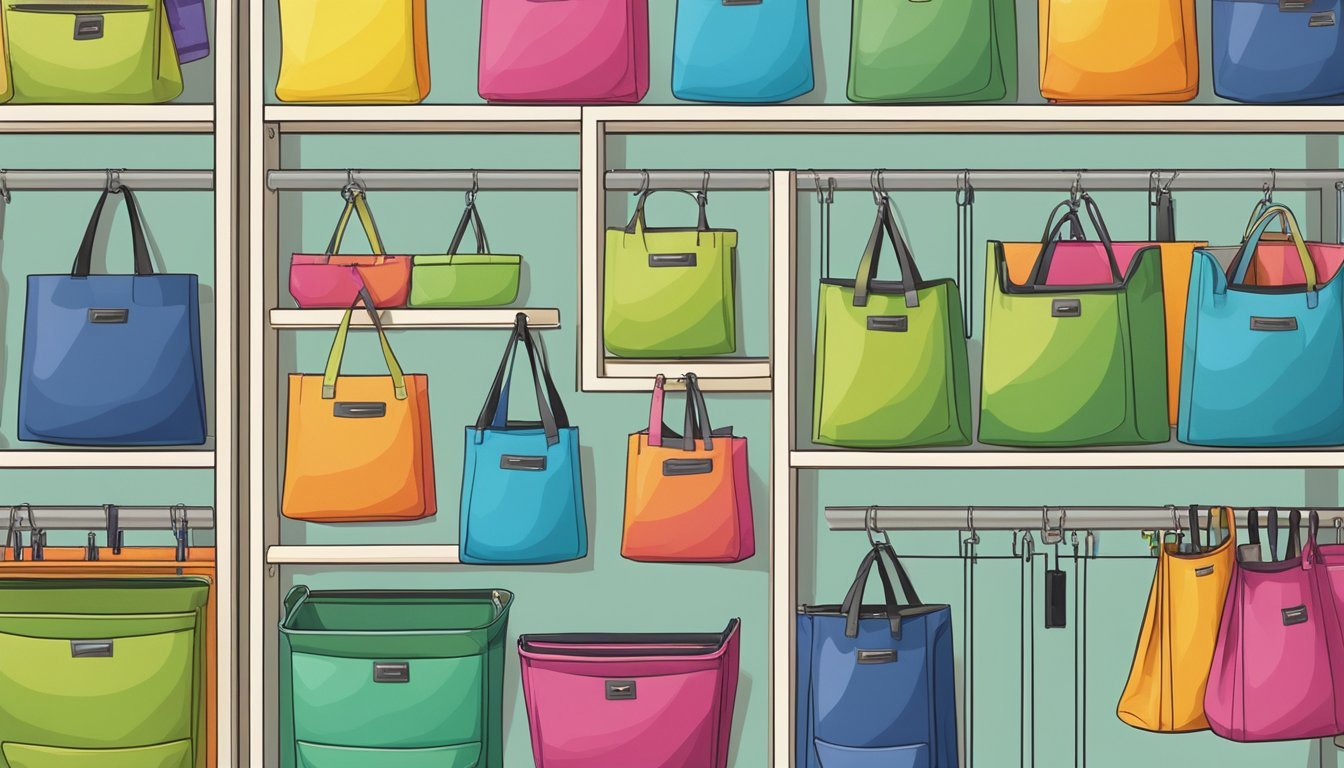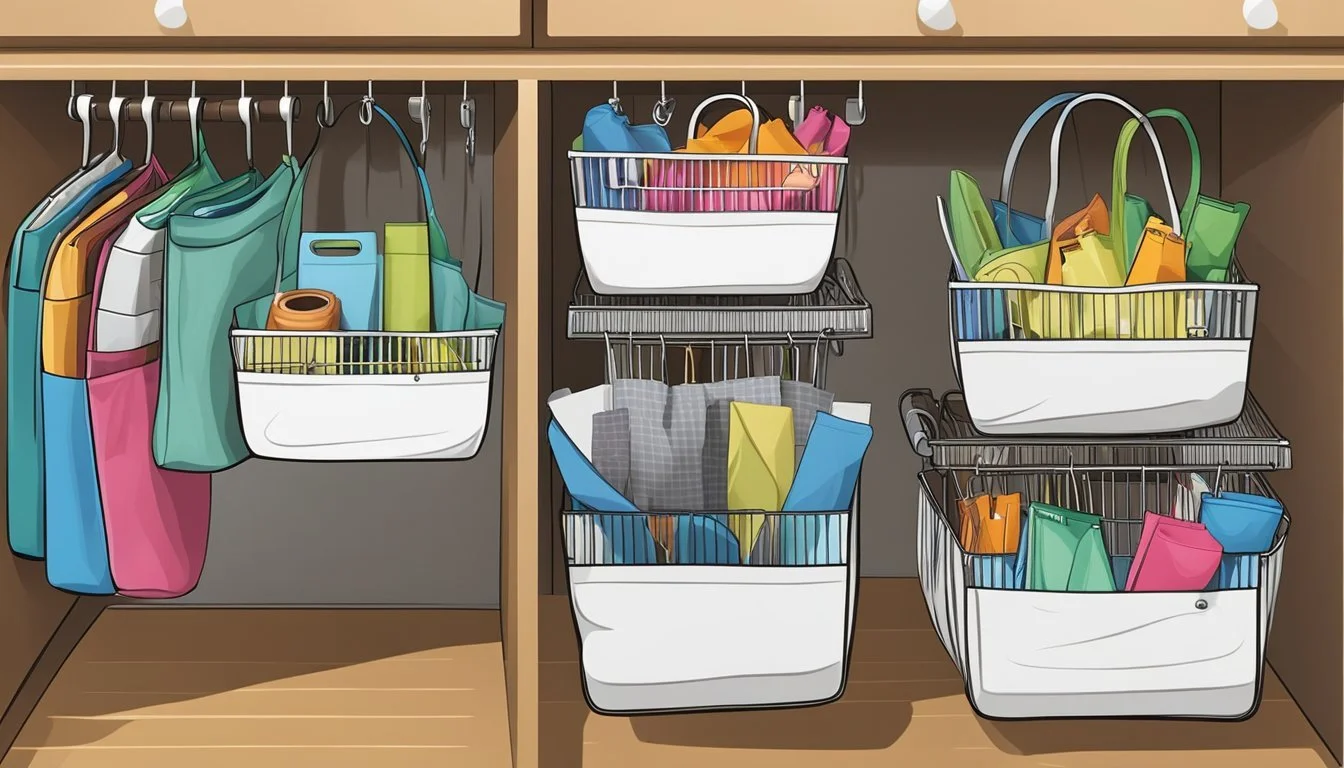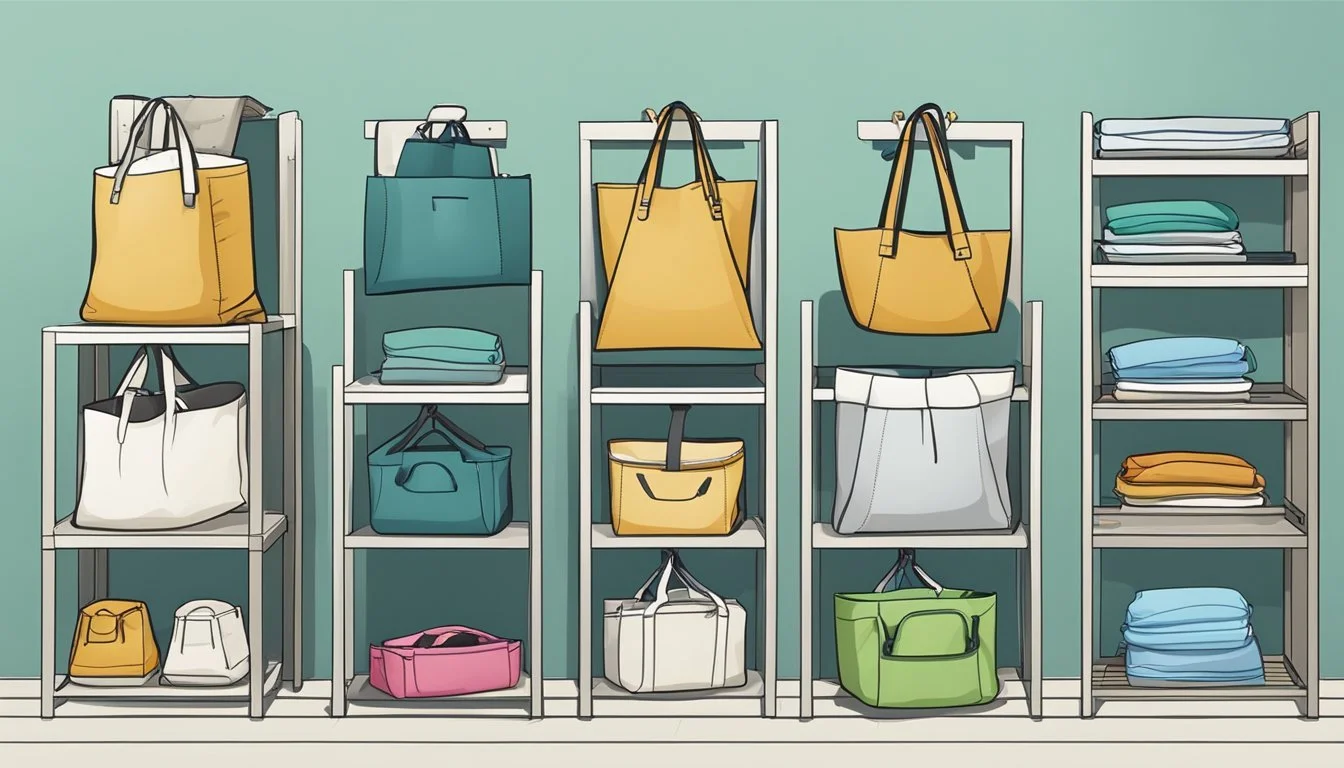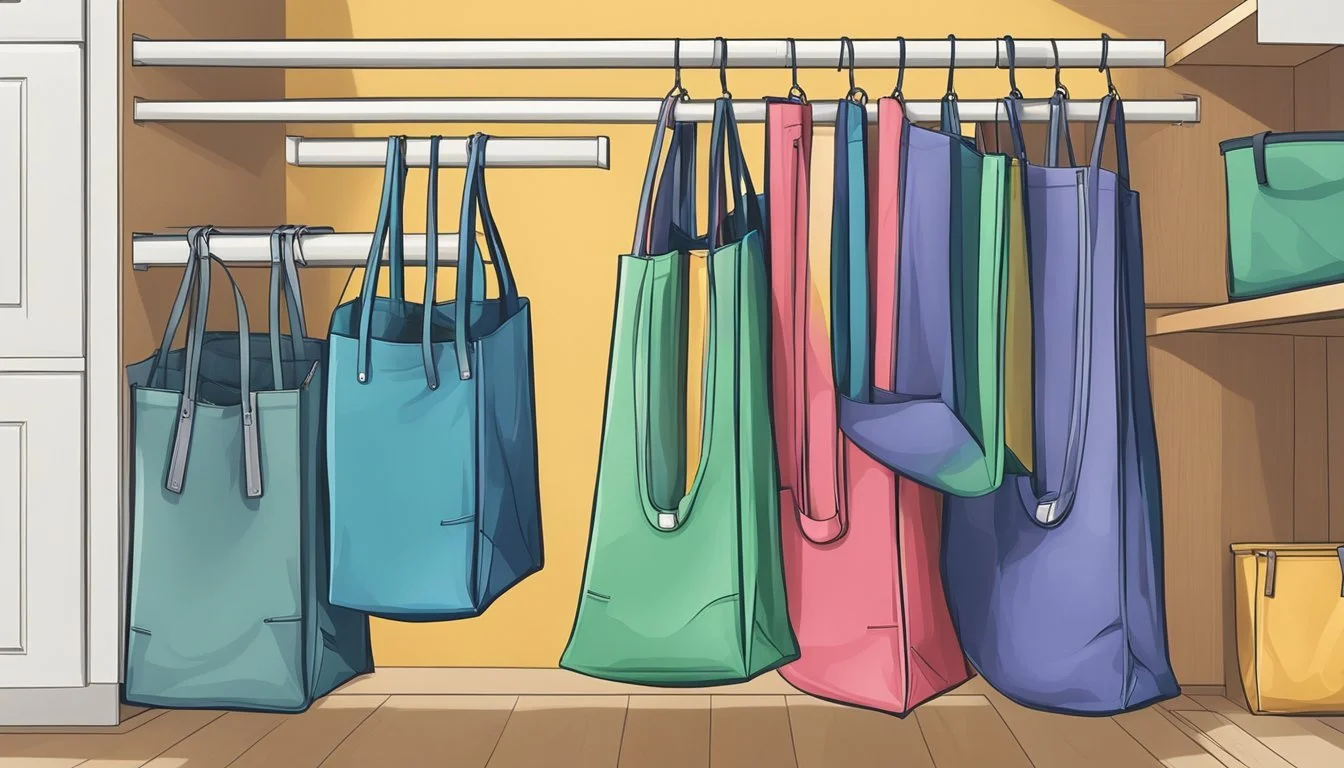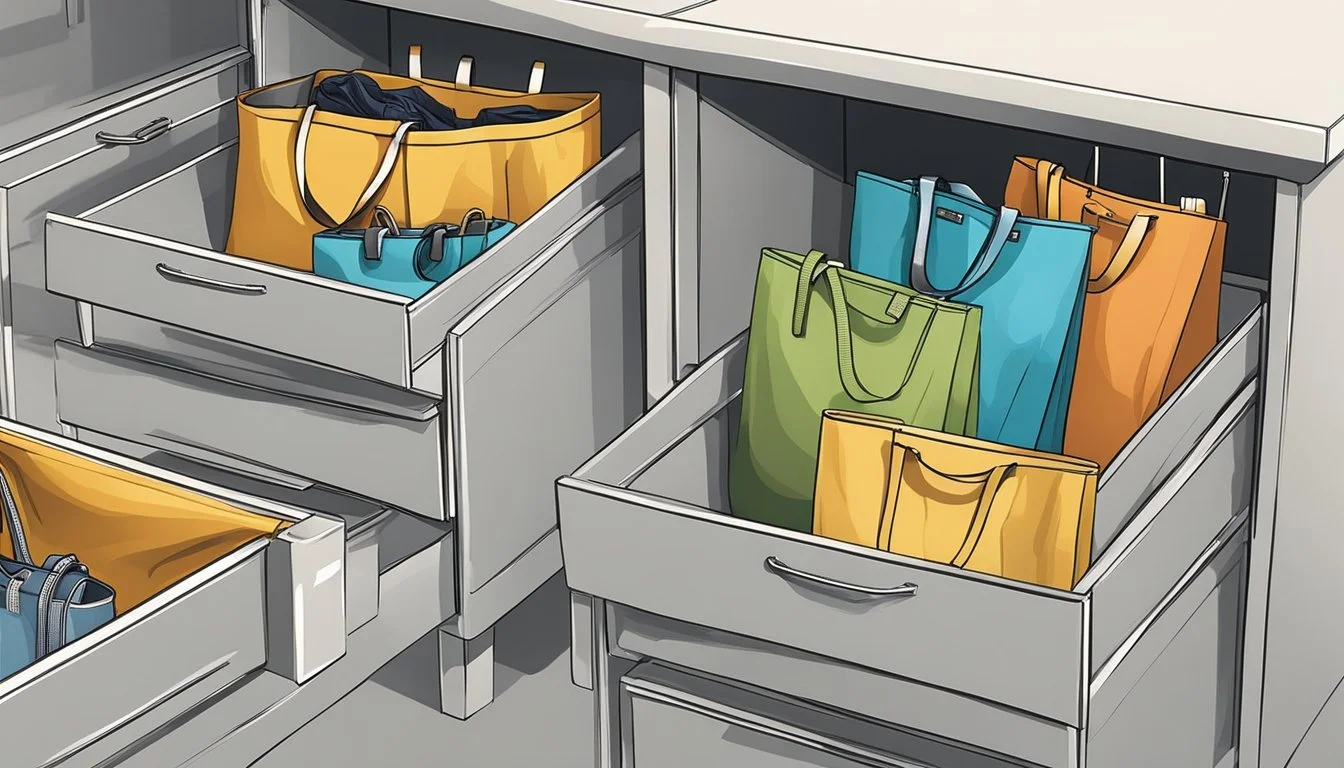10 Clever Ways to Store Your Reusable Shopping Bags for Maximized Space and Accessibility
As society becomes ever more conscious of environmental impacts, the shift toward eco-friendly practices has seen a rise in the use of reusable shopping bags. These sturdy, versatile alternatives to single-use plastics offer a significant step forward in reducing waste and promoting sustainability. However, with the accumulation of these bags comes a new challenge: efficient storage solutions that match the bags' environmental benefits by keeping them handy and organized.
Effective storage of reusable bags ensures they are easily accessible and helps maintain an orderly home. Creative storage strategies not only help in decluttering spaces but also prolong the life of reusable bags by preventing damage from crumpling and tangling. Whether tucked away in a kitchen drawer, hung neatly on a hook, or stored methodically in a dedicated container, there are numerous ways to keep reusable shopping bags well-organized and ready for the next trip to the market.
Among the plethora of storage options, some methods stand out for their ingenuity and practicality. A metal wire divider, for instance, offers a durable solution that keeps bags separated and visible. Folded bags can be compactly filed into a basket, much like one might do with clothing, ensuring a clean look and easy retrieval. For those with limited space, utilizing the inside of larger bags to nest smaller ones serves as a space-saving technique, while also ensuring the bags are grouped together for convenience. With environmental concerns at the forefront, finding the right storage system becomes not just about convenience, but about maintaining a lifestyle choice that reflects responsibility and care for the planet.
The Importance of Proper Storage
Proper storage of reusable shopping bags not only extends their lifespan but also supports environmental sustainability efforts. The way consumers store these bags can affect their usability and the wider environmental impact.
Environmental Considerations
Reusable bags were created as an answer to the environmental problems caused by single-use plastic bags. Every time a reusable bag is properly stored and maintained, it reduces the likelihood of resorting to plastic bags, thereby lessening plastic pollution and the associated carbon footprint. Proper storage ensures that reusable bags are readily accessible and remain in good condition, preventing them from becoming clutter that might eventually be discarded.
Reduction in environmental impact: Fine-tuning storage solutions for reusable bags can play a part in minimizing the overall consumption of single-use bags.
Prevention of pollution: Well-stored reusable bags are less likely to be forgotten or damaged, which in turn reduces the chance of contributing to pollution.
Maximizing Reusable Bag Lifespan
The durability of a reusable shopping bag is greatly influenced by how it is stored when not in use. Bags made from biodegradable or recycled materials require particular care to ensure they do not degrade prematurely. Proper storage techniques can protect these materials from wear and tear, which aligns with the principles of sustainability by allowing the bags to serve their purpose for as long as possible.
Preservation of materials: Keeping bags in a dry, clean place preserves their integrity and functionality.
Easier access and use: When stored systematically, it's more likely that the bags will be used frequently, thereby maximizing their potential to replace single-use bags.
Finding the Right Space
Selecting an appropriate area for storing reusable shopping bags involves considering accessibility and the efficient use of space. Each home has potential storage spots that, when utilized effectively, can keep bags handy and organized.
Utilizing the Kitchen
In many homes, the kitchen serves as a prime location for bag storage due to its proximity to where groceries are unpacked. Homeowners can make the most of this space by allocating a drawer especially for bags or using vertical storage solutions such as a hanging organizer on the back of a door. This keeps them within arm's reach yet out of the way.
Optimizing Closet and Pantry
Closets and pantries offer secluded yet accessible storage areas perfect for reusable bags. One can repurpose a shoe organizer on the closet door or create divided sections within a pantry to neatly file bags away. Look for underutilized spots, like the floor of a coat closet, to place a designated bin, ensuring bags stay folded and contained.
Improving Garage and Entryway Storage
Garages and entryways are transitional spaces ideally situated for grabbing a bag on the way out. Here, homeowners can install hooks or a small shelving unit in a designated spot to ensure easy access. Additionally, a simple clear tote can be labeled and placed in the garage, providing a straightforward solution for both storing and locating the bags.
Effective Organizing Techniques
In tackling the organization of reusable shopping bags, attention to detail in folding methods, hanging solutions, and categorization by purpose and size can drastically improve accessibility and storage efficiency.
Folding Methods
Folding reusable shopping bags is critical to maximizing storage space. A practical technique involves flattening the bag and pushing upwards from the bottom to release trapped air before folding it over in halves until it is compact. This method minimizes the space each bag occupies and allows for more orderly storage.
Hanging Solutions
Hanging solutions are a game-changer when it comes to organizing reusable bags. Using hooks or dedicated hangers, one can have bags neatly arrayed behind doors or inside cabinets. Installation of a simple rod with S-hooks or over-the-door organizers can transform unused space into a convenient bag storage area.
Categorizing by Purpose and Size
Effective storage implies not just keeping bags out of the way, but also sorting them in a manner that makes them easy to find and select for the right purpose. Use dividers or compartments within drawers or bins to categorize bags by size or intended use. Smaller bags can be separated from larger totes, and specialty bags, like those insulated for cold groceries, can have their designated spot, making the routine of selecting a bag intuitive and swift.
Creative Storage Containers
Choosing the right containers can transform how one stores reusable shopping bags, offering tidiness and efficiency. Durable and aesthetically pleasing options not only organize bags but also enhance the look of one’s storage space.
Bins and Baskets
Storage Bins: An individual can use clear storage bins for a sleek look that allows them to see the contents at a glance. Assigning a specific bin for reusable bags, placed in a pantry or closet, keeps them neatly tucked away until required.
Baskets: For a more rustic or homey vibe, woven baskets serve a dual purpose of storage and decoration. One can file-fold the bags and store them in these baskets, positioning them in easily accessible locations.
Drawer and File Systems
Drawer Organizer: Utilizing a drawer system in a kitchen or utility space can be ideal. One may dedicate a drawer solely to reusable bags, file folding them similarly to clothing for optimal space usage.
Filing System: Implementing a file box or wall-mounted file holder is an innovative approach. This system works best for those who have a multitude of bags that can be sorted by type or size, creating a structured system.
Specialized Bag Organizers
Over-the-Door Organizers: Specialized organizers designed to hang over doors utilize often overlooked storage space. They allow for several bags to be stored in one compact space.
Metal Wire Dividers: Using a metal wire divider within a shelf provides a sturdy and segmental approach. Not only do they keep bags separated, but they also add an industrial touch to the storage area.
Integration Into Daily Routines
Storing reusable shopping bags can be seamlessly integrated into one's daily life by establishing straightforward systems during grocery shopping, car organization, and household chores. These practices not only enhance convenience but also promote the continuous use of eco-friendly totes.
Grocery Shopping
At the grocery store, shoppers often find themselves with a collection of reusable bags. A bag of bags concept is simple yet effective here; one stores a variety of totes within a larger, sturdier bag. This large tote then serves as a go-to container for all other bags, making it easier to carry everything in and out of the store.
Pre-Shop Ritual: Before heading to the grocery store, individuals grab their bag of bags from a designated spot, ensuring they never leave without their reusable options.
Post-Shop Routine: After unloading groceries at home, one should make it a habit to immediately fold the bags and place them back into the bag of bags, ready for the next trip.
Car Storage Innovations
The car, particularly the trunk, offers excellent storage possibilities for reusable shopping bags.
Trunk Organizers: Consider investing in a trunk organizer with a special compartment designated for folded tote bags. This allows for an easy grab-and-go approach when arriving at the store.
Seatback Hooks: Install hooks on the back of car seats to hang reusable bags, ensuring they are always within reach when needed.
Tip for Folding: Flatten the bag to expel air, fold it halfway, and then over again ensuringsmoothness from the bottom to remove any trapped air.
Household Chore Adaptations
Incorporating bag storage into household chore routines encourages the maintenance of tidy and functional living spaces.
Laundry Room: Post laundry, assign a spot near the washer or dryer to store folded reusable bags, linking their storage to the regular chore of laundry.
Entryway: A basket or bin near the home's entryway also works immaculately for storing bags, allowing for a quick pick-up or drop-off point for tote bags as one comes and goes.
Maintaining Your Reusable Bags
Proper maintenance of reusable bags involves regular cleaning and timely repairs to ensure they remain durable and hygienic for everyday use. By adopting effective cleaning practices and repairing wear and tear, individuals can extend the lifespan of their bags and prevent common issues such as mold and mildew.
Cleaning Practices
Washing: Bags should be laundered using a mild detergent to preserve the fabric's integrity. For machine washable bags, they recommend placing them in a gentle cycle with cold water. For hand washing, they advise soaking the bags in a mixture of warm water and mild detergent before rinsing thoroughly.
Machine Washable Bags: Gentle cycle, cold water
Hand Washable Bags: Soak in warm water, mild detergent
Air Dry: After washing, bags should be air-dried completely to prevent mold and mildew growth. They suggest hanging the bags in a well-ventilated area or laying them flat on a clean surface until they are fully dry.
Air Drying: Hang in a ventilated area or lay flat
Repair and Refresh
Maintenance Tips: Periodically inspect bags for any signs of damage such as tears or ripped seams. For minor tears, they recommend simple hand-stitching to repair the fabric, and for larger damages, they suggest using a patch or seeking professional repair services.
Minor Repairs: Hand-stitching torn areas
Major Repairs: Patching or professional services
Mold and Mildew Prevention: To keep bags in pristine condition, they advocate storing them in a dry location and ensuring they are clean and dry before folding and storing them. They emphasize that preventing moisture accumulation is crucial for avoiding mold and mildew.
Storage: Keep in a dry place
Prevention: Ensure bags are dry before storage
Material-Specific Considerations
When storing reusable shopping bags, one must take into account the material from which they are made. Different fabrics require unique storage solutions to maintain their durability and shape.
Cotton, Canvas, and Hemp
Cotton, canvas, and hemp bags are prized for their robustness and eco-friendliness. These materials are best stored in a dry environment to prevent mildew. For canvas totes and bags, one should fold them neatly or hang them to avoid creases.
Folding: Flatten and fold along the seams to maintain the shape.
Hanging: Use hooks or a rod to hang bags by their handles.
It is important for these materials to breathe, so they should not be stored in plastic containers.
Synthetic Materials
Reusable bags made from synthetic materials like polyester or nylon offer the advantage of being lighter and often more water-resistant than natural fibers. Care should be taken to avoid heat sources when storing.
Rolled Up: Ideal for saving space, rolling the bags neatly and securing them with a rubber band works well.
Stacked: Stack them flat within an easy-to-access drawer or shelf.
These materials can also be folded and compartmentalized, using bins or dividers for organization.
Accessorizing for Functionality
In the context of reusable shopping bag storage, functionality can be significantly enhanced by opting for the right accessories. By deploying hooks and handles smartly, or by incorporating features for insulated bags, individuals can manage their storage needs with greater efficacy and accessibility.
Hooks and Handles
One can utilize Command hooks to store and organize reusable shopping bags conveniently. These hooks stick to various surfaces without causing damage, and they make the bags easily accessible. Here's how to optimize storage with hooks:
Positioning: Place hooks at strategic locations like the kitchen, garage, or closet door where bags can be grabbed on the go.
Types of Hooks:
Standard Hooks: Ideal for lightweight bags.
Reinforced Hooks: Necessary for heavier bags with reinforced handles.
By installing multiple hooks, users can allocate a hook per bag type or even categorize them according to the frequency of use.
Insulated Bag Enhancements
Insulated shopping bags require special attention to maintain their functionality. They are typically used to transport temperature-sensitive items, hence correct storage is essential. Consider these enhancements:
Easy Identification: Mark insulated bags with a tag or symbol for quick recognition.
Separate Storage: Store insulated bags separately from regular ones to keep them free from odors and stains.
It's imperative to ensure that the handles of insulated bags are robust, to withstand the additional weight of chilled or frozen goods. Users should check the condition of these handles regularly and avoid overloading the bags to preserve their structural integrity.
Sustainable Practices Beyond Storage
While effective storage of reusable bags is one step toward an eco-friendly lifestyle, embracing wider sustainable practices can greatly amplify the positive impact on the environment. These strategies not only reduce plastic waste but also promote conscious consumerism.
Reducing Plastic Waste
Plastic bags, especially single-use plastic bags, are a major contributor to plastic waste worldwide. To curb this, individuals can:
Opt for reusable shopping bags over single-use plastic bags.
Avoid plastic produce bags by using cloth alternatives.
Choose products with minimal packaging to reduce plastic footprint.
Employing these methods not only helps to declutter one's life from excess plastic but also conserves resources.
Advocacy and Mindful Usage
Advocacy plays a crucial role in the transition towards sustainable living. Individuals can:
Educate others on the impacts of plastic waste on the environment.
Encourage local stores to offer incentives for bringing reusable bags.
Support legislation that aims to reduce plastic waste.
By mindfully using and promoting eco-friendly choices, consumers can help drive the demand for sustainable practices, thus reducing the reliance on plastics and helping to save money in the process. This approach strengthens the community’s overall commitment to eco-friendly habits.
Conclusion
In crafting an effective storage solution for reusable shopping bags, one should focus on creating a system that is not only convenient but also maintains a clutter-free environment. The objective is to ensure that these bags are easily accessible, lightweight, and incorporated into a storage system that complements one's lifestyle and home decor.
Key Takeaways
Convenience: Having a designated spot for your reusable bags ensures they are easily reachable when you're headed out the door. It's practical to choose a storage method near where you'll use them most, like the kitchen or garage.
Clutter-Free: A tidy system prevents the accumulation of bags in random places around the home. Opt for storage solutions that keep bags contained and out of sight when not in use.
Stylish: The storage method can also serve as a decor piece; for instance, a decorative basket or a chic holder complements the room's aesthetic while fulfilling a functional need.
Accessible: Make sure the bags are stored in a manner where they can be easily grabbed, such as using an over-the-door organizer or storing them in a drawer within arm's reach.
Storage System: Whether repurposing a shoe organizer, utilizing a metal wire divider, or adopting the file-fold technique into a basket, the goal is to establish a system that is adaptable, durable, and scalable as the collection of reusable bags changes over time.

